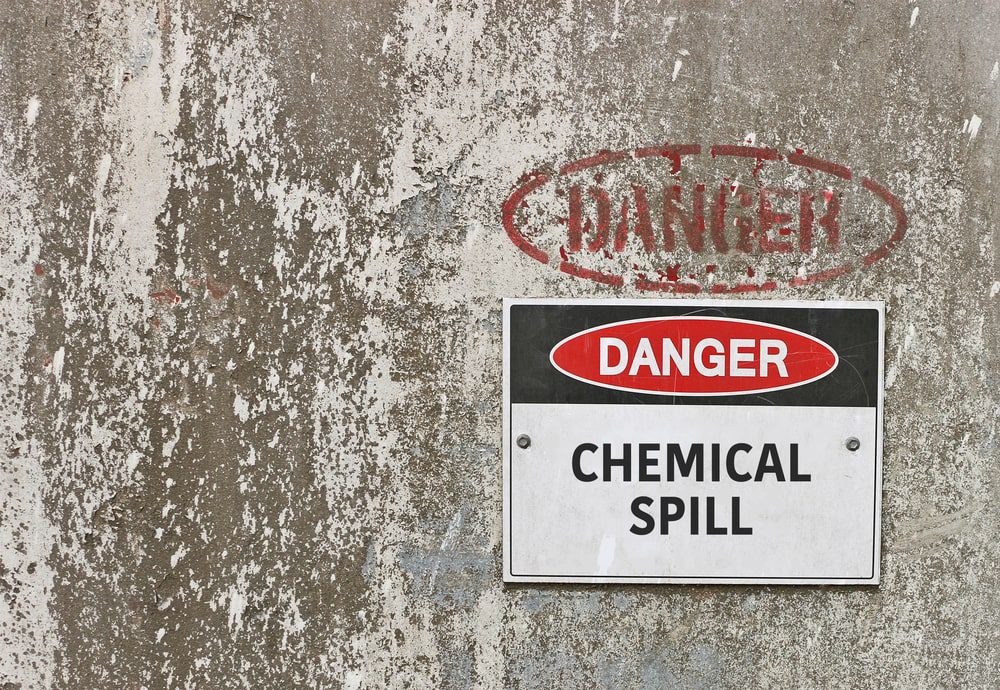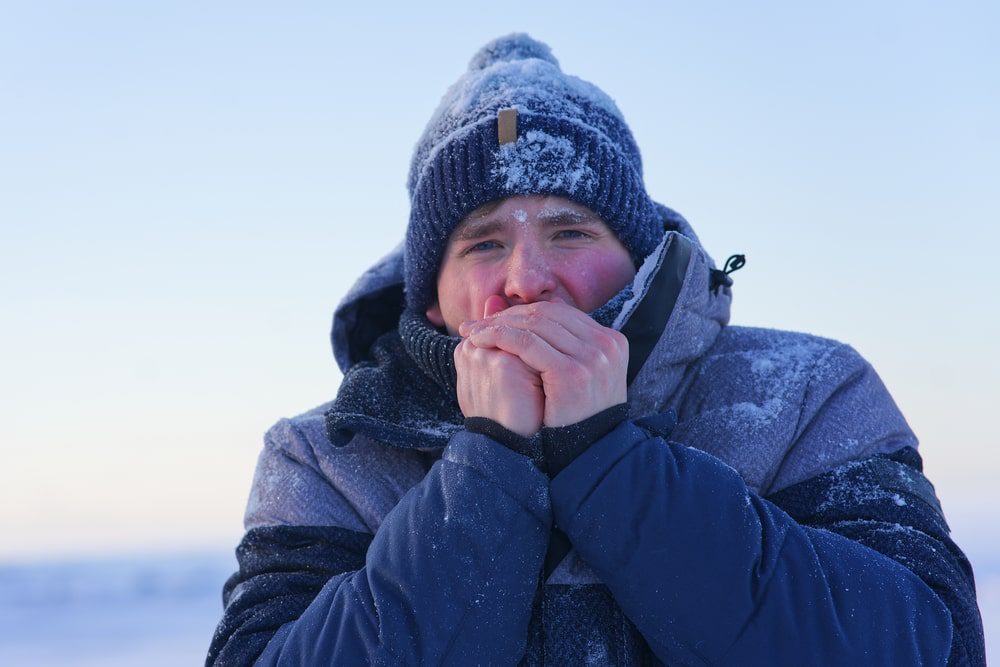Let’s talk about the human body’s reactions to extreme conditions!
Certain extremes can harm every part of our bodies, causing, in some cases, irreversible damage. While the human body is impressively adaptable, it’s not immune when exposed to cold, fire, chemicals, or radiation. We heard about people being frozen, burned at the stake, and crushed with unbelievable amounts of outside force.
But what exactly happens to the human body when it’s subjected to such deadly extremes? We’ve rounded up some shocking changes that may occur in the body as reactions to extreme conditions, and some of them are pretty fascinating! Let’s get started!

1. Pressure
Decompression sickness, also known as “the bends,” occurs when the human body feels a sudden decrease in surrounding pressure. Blood can no longer dissolve gases like nitrogen properly. Instead, the gases linger in the bloodstream as bubbles.
In the most severe cases, the bubbles accumulate in blood vessels, blocking the flow. These reactions to extreme conditions can result in confusion, dizziness, or even death. On the other hand, the milder form of decompression sickness (which is called DCS-I) typically results in tissue swelling and joint pain.
Divers who regularly expose themselves to pressure changes can build up an undetected case of the bends that develop into permanent joint damage. However, it’s the DCS II type that can kill. Those struck by this can experience conditions such as paralysis, vertigo, and shock.
2. Fire
Hot air and humidity can push the human body to its limit. But fire takes the body several steps further, through severe damage, death, and disintegration.
While this may sound strange, experts at the University of West Florida set fire to donated corpses to analyze the human body’s reactions to extreme conditions. It turned out that the average body burns for seven hours.
The outer skin gives up first, crackling and crisping before it burns away pretty fast. The dermal layers of skin don’t last much longer either, vanishing after around five minutes. By then, the fire had burned away the human body’s shells and started on the fat layer.
Fat melts away, making it an effective fuel as long as flammable materials, like clothing or the wood of a pyre, work like a candle wick. Reactions to extreme conditions like fire may occur for a few hours.
Flames also eat away at the muscles, contracting them and making the body move.
The fire usually burns itself out when there are only bones left, unless they crack to expose the marrow. Teeth don’t expose, either.
3. Radiation
Moving forward with the list of humans’ body reactions to extreme conditions, let’s take a look at what happens to it when exposed to radiation.
Radioactive decay releases energy immediately into the surrounding areas. That energy interacts with the body cells, either completely killing them or causing them to mutate. Mutations result in cancer, and some forms of radioactive material affect specific parts of the body.
For instance, radioactive iodine builds up in the thyroid gland, causing thyroid cancer, particularly in children. According to experts, radiation exposure must be relatively high to considerably increase a person’s risk of developing cancer.
The average person is exposed to around 0.24–0.3 rem of radiation in a year. For your risk of getting cancer to increase by 0.5%, you need around 10 rem. At the much greater level of 200 rem, radiation sickness kicks in. The reactions to extreme conditions such as radiation include short-term, instant effects like vomiting, damage to bone marrow, and a reduction of red blood cells.

4. Chemicals
Hydrogen sulfide is pretty dangerous stuff. You may know it as the smell of rotting eggs, and at high levels, it may have extinguished the dinosaurs and massive portions of other prehistoric life.
According to experts, all living things produce hydrogen sulfide in very small amounts, which helps control the rate at which our internal systems function. Most recently, it has been shown to have a new use: it can put mice into a state of suspended animation.
When the chemical is administered at the proper dose, it slows the body’s metabolic rate and lowers the core temperature to well below the hypothermia limit. All bodily functions, including pulmonary activity and circulation, almost shut down.
Read on to discover other human body’s reactions to extreme conditions!
5. Starvation
No. 5 on the list of the human body’s reactions to extreme conditions is what happens when starvation strikes. We all know the lack of food can kill, but the specifics are pretty horrifying.
According to experts, the stomach physically shrinks, which can make it uncomfortable and painful to start consuming normal amounts again if food becomes available. The heart and its muscles also shrink, restricting the amount of work they can do and dropping blood pressure. In women, menstruation can stop completely because of prolonged starvation.
When the human body lacks enough sugar to burn, it starts using its fat deposit. While this may sound like a good thing, when the fat that has been stored breaks down quickly, it produces compounds called ketones along with energy. Ketones accumulate, leading to exhaustion and nausea, not to mention bad breath.
But there are more reactions to extreme conditions, like starvation. The bones may permanently weaken, while the brain suffers irreparable damage. Without essential nutrients like phosphorus and potassium, the brain starts malfunctioning.
You may physically lose gray matter in the brain—even if you start eating again, some of the loss is permanent.
6. Acceleration
When it comes to reactions to extreme conditions, G-forces never really affected humans until as late as World War I, when pilots started mysteriously losing consciousness mid-flight. The world eventually learned a lot more about how g-forces strike the human body, thanks to US Air Force officer John Stapp.
The officer subjected himself to forces of up to 35 g, which would be similar to accelerating at 1,125 feet per second squared. His bones split and broke, and his dental fillings flew out. However, Stapp found that the real effect was on his blood.
When acceleration occurs along a horizontal axis, the human body withstands the g-forces comparatively well because blood circulation stays on the same horizontal plane. But when g-forces act on a body placed in a vertical position, things don’t go so well.
Our systems basically just don’t have enough strength to pump blood, and it all goes to our lower extremities. But that’s where g-force suits stop these reactions to extreme conditions from occurring. Air bladders in the suits expand with enough force to hold the blood where it belongs, preventing pilots from losing consciousness.
7. Loneliness
Moving forward with the list of reactions to extreme conditions, let’s talk about loneliness. We’re not talking here about the feeling of loneliness we all may experience from time to time. While feeling lonely is normal and doesn’t affect the human body in any way, it’s chronic loneliness that has a real effect on the human body.
According to experts, people who report being lonely show severely impaired immune systems for an interesting reason. Lonely people tend to see the world as a dangerous, hostile place, and because of that, their immune systems focus on fighting bacterial infections.
This makes the body unable to produce as many antiviral infections, resulting eventually in a greater risk of developing viral illnesses. These people are also more likely to deal with high blood pressure, as hardened arteries have also been associated with chronic loneliness and difficulty sleeping.

8. Cold temperatures
When the human body’s temperature drops to about 86 °F, all its functions slow down. Reactions to extreme conditions like exposure to cold temperatures include clumsiness, fatigue, and a delayed response to outside stimuli.
According to experts, one of the first functions to fail around the 86-degree mark is thermoregulation, or the body’s ability to regulate its core temperature on its own. The heart function will also gradually slow down, along with lung function, until the rest of the body runs out of oxygen.
Furthermore, the renal system quickly collapses, flooding the body with a diluted version of urine. This substance eventually leaks into the organs and blood, causing shock or other heart issues.
These reactions to extreme conditions lead to impaired metabolism and decreased demand on the body’s system, which enable some people to survive severe cases of hypothermia and fully recover when properly warmed.
9. Heat
Heatstroke happens when the human body’s internal temperature rises above 104 °F. Classic heatstroke progressively develops with exposure to excessive heat, such as during a summer heat wave.
Exertional heatstroke strikes people who engage in highly physically demanding tasks in hot conditions, such as athletes and industrial workers. With either type, only about 20% of sufferers survive without treatment, and many of those who do suffer some degree of brain damage.
Humidity increases the risk of heatstroke by keeping sweat from evaporating, slowing down the body’s ability to rid itself of heat. Once the core temperature hits 107 °F for as little as 45 minutes, cells break down. Other reactions to extreme conditions, like exposure to heat, include weakening of the intestinal walls and tissue swelling.
In less severe forms, known as heat exhaustion, only the circulatory system slows, while with full heatstroke, the nervous system malfunctions as well, causing convulsions, dizziness, and confusion.
Human body facts are so cool! For more of those, here’s a book with plenty of them!
If you liked our article on the body’s reactions to extreme conditions, you may also want to read 7 Cool Genetic Mutations You Could’ve Had Too!














